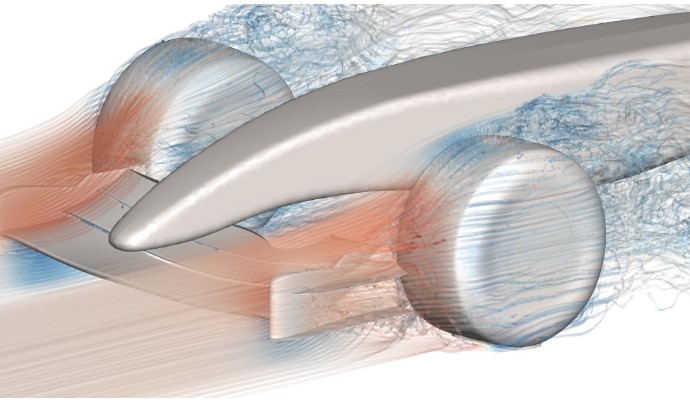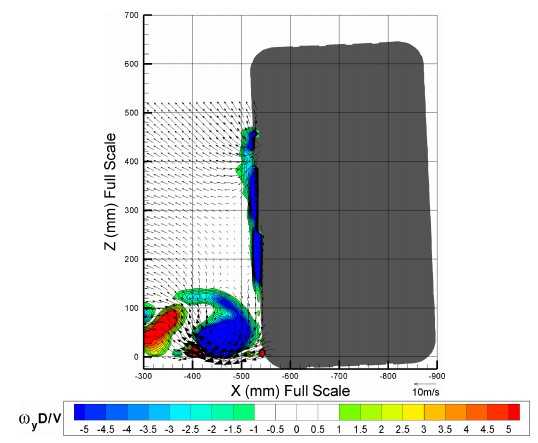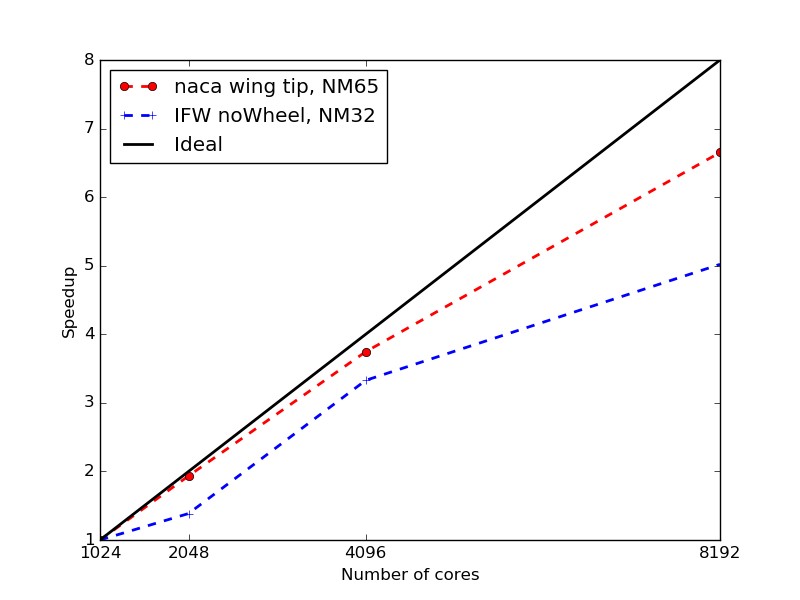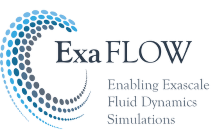Author: Dr. Julien Hoessler, McLaren
One of our goals here in McLaren as industrial partners is to demonstrate that the algorithms developed within the ExaFLOW consortium will potentially help improve the accuracy and/or throughput of our production CFD simulations on complex geometries. To that end, we provided a demonstration case, referred to as McLaren Front wing, based on the McLaren 17D, and representative of one of the major points of interest in Formula 1, i.e. the interaction of vortical structures generated by the front wing endplate with the front wheel wake.

Figure 1: McLaren Front wing, initial run in Nek++
Such a case is important for the researchers within the consortium as it provides a geometry where the mesh is potentially sub-optimal, and as such, representative of the typical type of problems one would encounter in a more engineering-oriented type of CFD applications.
To quantify the accuracy improvements, experimental measurements will also be performed within the next six months at Imperial College London, aiming at quantifying the transient behaviour of the vortices along the tyre (see Fig. 2, courtesy of Jon Pegrum [1]).

Figure 2: Normalised time-averaged vorticity of one of the front wing vortices around the tyre [1]
It is however thought that this demonstration cases will require a significant amount of HPC resources to be run and obtain accurate statistics, and it is important for shorter term development/testing to provide a subset of test cases which could be run more often and on more limited resources.
Smaller models proposed for quick numerical experiments
1. Naca wing tip vortex, courtesy of J.E Lombard [2]: this geometry described and run experimentally by [3], is a standard test-bed for turbulence model development, and is small enough to run at high polynomial order on a reasonable core count.

Figure 3: Contour of the isohelicity along the wing-tip vortex formation [1]
2. Front wing without the wheel: this is a simplification of the demonstration case which allows us to run and test meshing/solver and initialisation strategies (see fig. 4)

Figure 4: Isosurfaces of total pressure at two different meshes exhibiting additional sub-structures(right) when using higher quality mesh generation techniques (left, based on [4])
A scaling test was performed without any particular optimisation from a version of Nektar++ [4] to be able to quantify potential improvements later on. Fig. 5 shows the speedup across core counts for the two models, ran respectively at 3rd and 6th order for the front wing and the wing tip, and the operation will be repeated with more recent improvements to Nektar++. We provide a repeatable test suite with an initial field and run script as well as a version control reference for other users to reproduce the numerical experiment. A more detailed battery of tests mapping the polynomial order is also underway.
Our next block of work is now to mesh and run the largest demonstration model and run it for a few iterations to get a reference.

Figure 5: Scaling for 1024 to 8192 cores on the two test cases proposed.
If you want to find out more about the contents of this article, please contact Julien Hoessler at McLaren.
References
[1]: Pegrum, J. M. 2006 Experimental study of the vortex system generated by a formula 1 front wing. PhD thesis, Imperial College London.
[2]: Chow, Jim S, Zilliac, Gregory G & Bradshaw, Peter 1997 Mean and turbulence measurements in the near field of a wingtip vortex. AIAA journal 35 (10), 1561–1567
[3]: Lombard, Jean-Eloi W., Moxey, David, Sherwin, Spencer J., Hoessler, Julien F. A., Dhandapani, Sridar & Taylor, Mark J. 2015 Implicit large eddy simulation of a wingtip vortex. AIAA Journal 54 (2), 506–518.
[4]: C. D. Cantwell, D. Moxey, A. Comerford, A. Bolis, G. Rocco, G. Mengaldo, D. De Grazia, S. Yakovlev, J-E. Lombard, D. Ekelschot, B. Jordi, H. Xu, Y. Mohamied, C. Eskilsson, B. Nelson, P. Vos, C. Biotto, R. M. Kirby, and S. J. Sherwin, “Nektar plus plus : an open-source spectral/hp element framework,” Computer physics communications, vol. 192, pp. 205-219, 2015.



